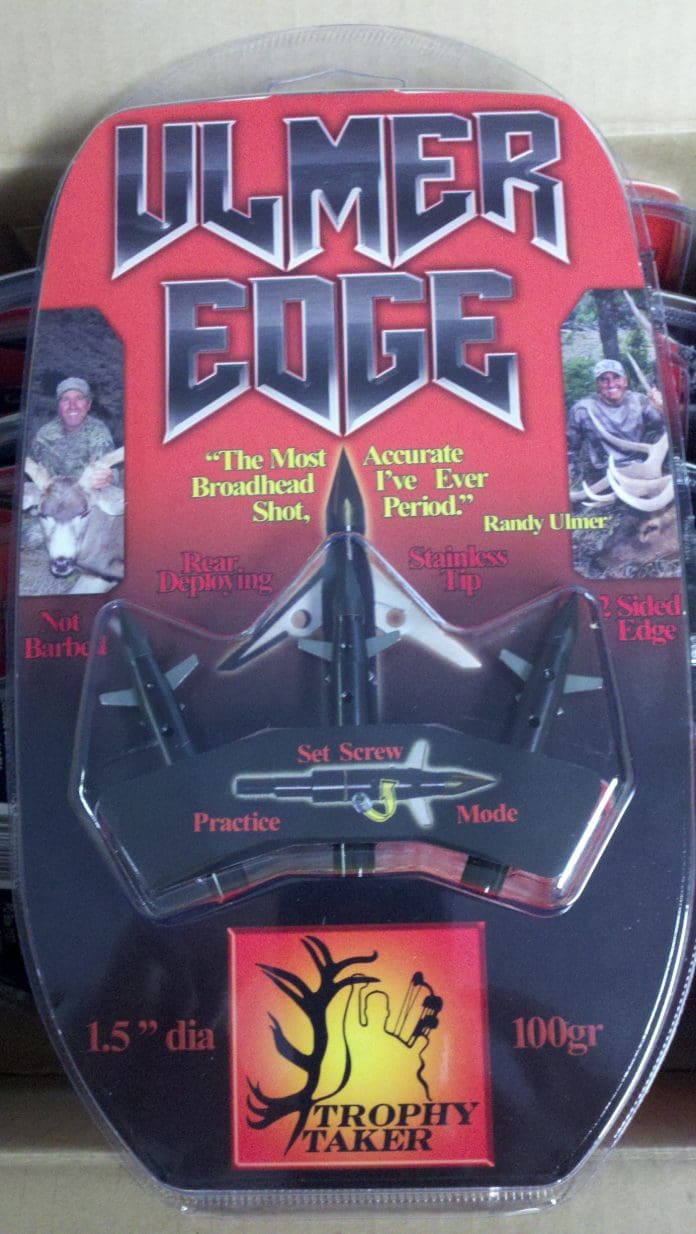ULMER EDGE
NEW INNOVATION IN BROADHEAD TECHNOLOGY
BY: EVAN WILLIAMS
I removed the Gold Tip Pro Hunter from my quiver in preparation. He was headed straight towards me, feeding, closing the distance from 100 yards. Standing in chest high Milo I knew this was the moment that I was finally going to get my 200”+ Mule Deer. Just as my arrow cleared the quivers hood I heard the rattle of a loose blade. As I peered down my eyes confirmed what my ears had already told me. Quickly I dropped the arrow next to me and reached for another, he was now at 70 yards and still closing.
As the second arrow clicked onto the string I grabbed my rangefinder. Fifty-four and a half yards now stood between me and the largest Mule Deer I have had a chance to harvest. I hooked onto the d-loop and raised my bow. Again, I hear the familiar rattling of a loose blade. One of the heads of Milo had grabbed a blade and opened it up. I pulled the arrow off my bow and dropped it next to me with the first and reached for number three.
He had begun to move away 65, 70, facing straight away at 75 I knew it was over. I starred in disbelief as a 217” monster nicknamed “Two-Tone” walked away before my very eyes. It was time for a change.
The name ULMER is synonymous with bow hunting. Trophy Mule Deer and Elk hunters marvel at the annual successes of Dr. Randy Ulmer (AZ) but this article isn’t geared towards the hunting exploits of Randy but the engineering and designs of his brother Rusty Ulmer.
A few years ago Rusty Ulmer set out to create the perfect broadhead, his creation: the Ulmer Edge. Packed with features the Edge may be the hottest broadhead on the market for 2012.
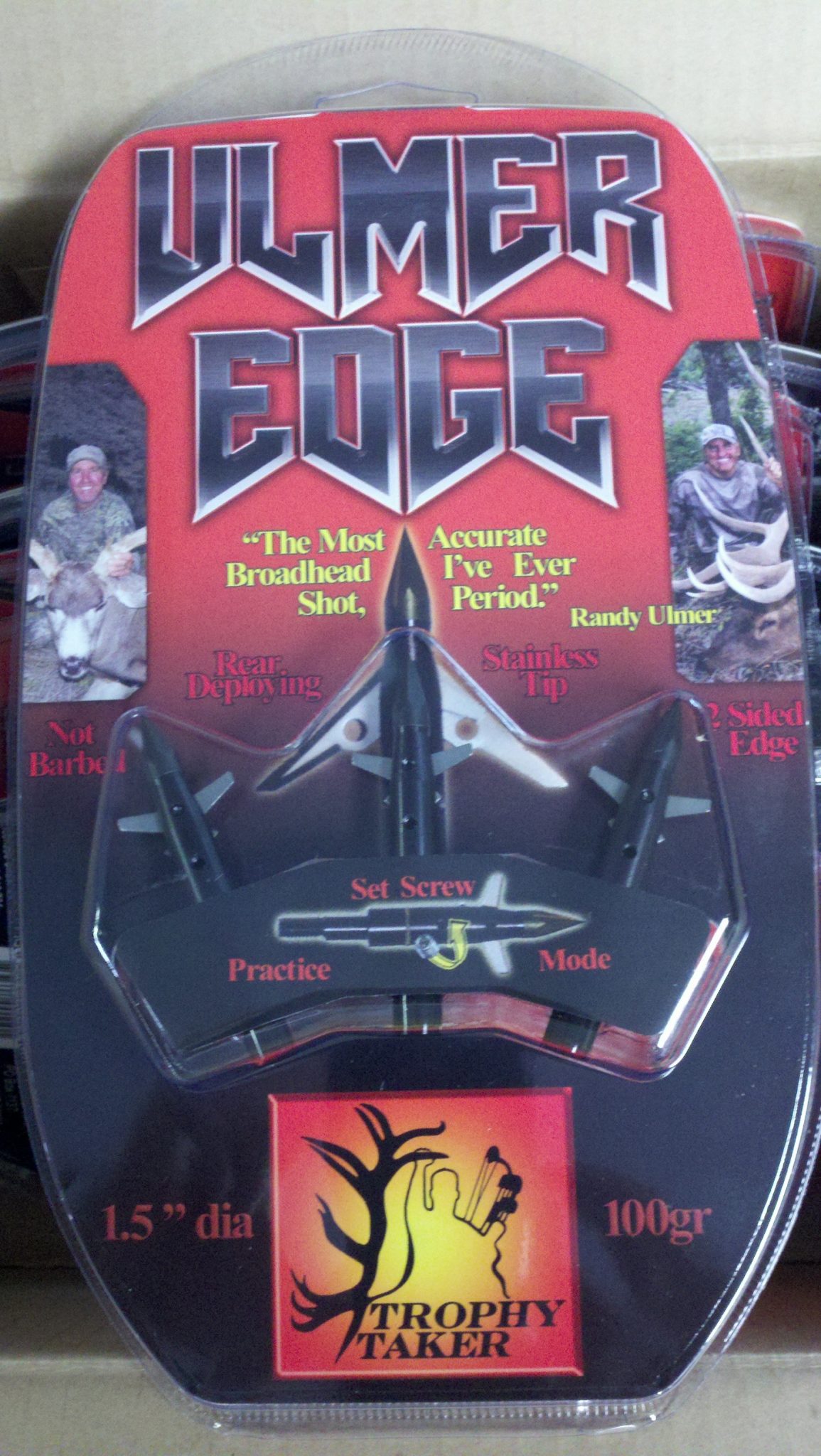
Features:
– Practice mode
– Pivoting blades
– Sharpened back edge
– Rear deploying blade design
– Stainless steel tip
– 1.5” cutting diameter
The Ulmer Edge comes with a three-grain stainless steel set screw that when inserted into the ferrule of your broadhead allows you to shoot them into a broadhead target without blade deployment. No blade deployment means no dulling of our hunting blades and three grains will have minimal effect on your speed. Three grains equates to a loss of one foot per second that loss in speed will cause your arrow to impact roughly 1.5” low at 100 yards.
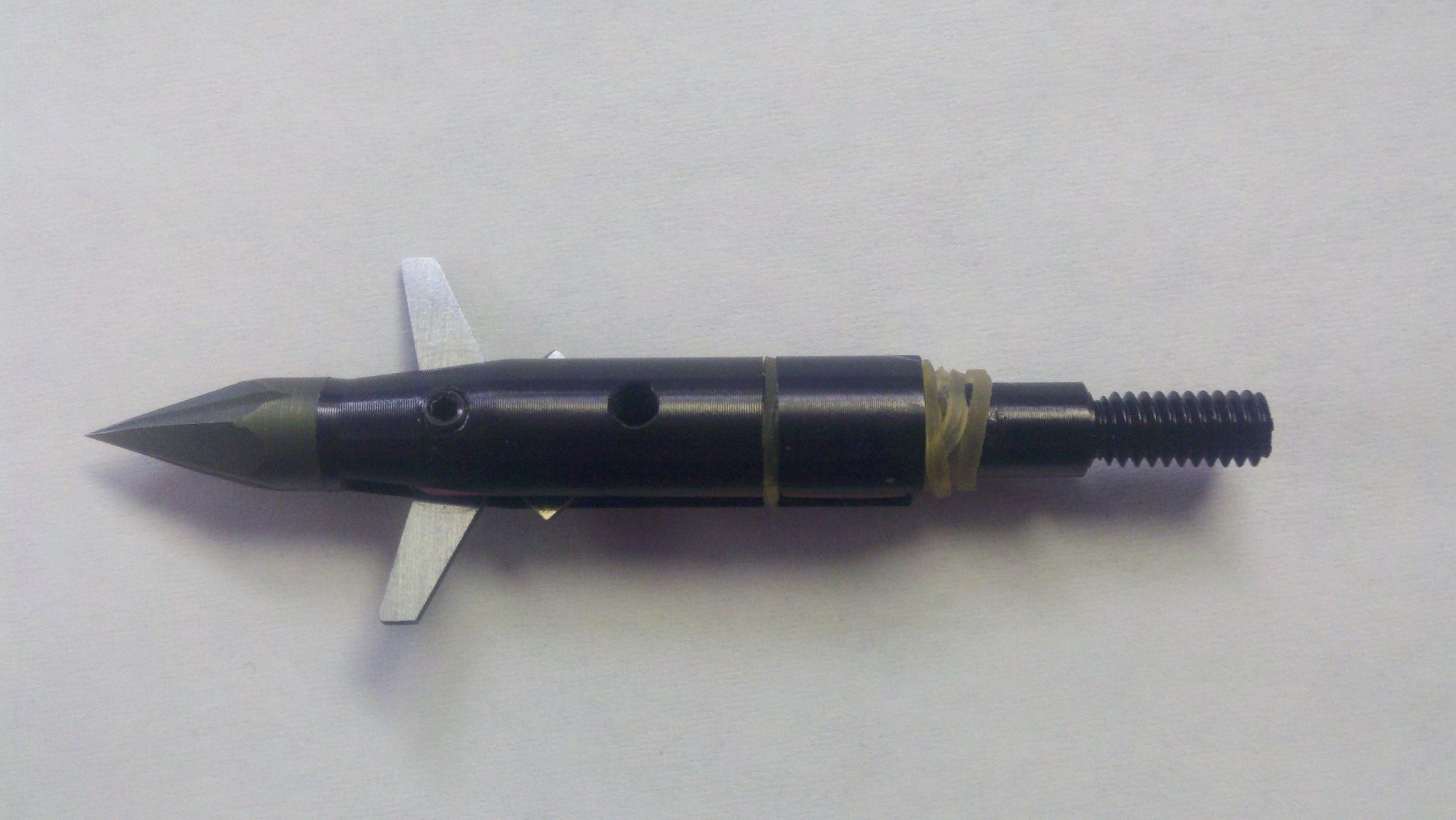
The Pivoting blade design allows the blades to swing around heavy bone and other obstructions and thus increasing our arrows penetration. We all want the best penetration that we can get on an animal because we all know the better our penetration the more hemorrhaging and internal damage. An increased in the amount of hemorrhaging leads to a faster, more ethical kill and quicker recovery.
A sharpened back blade on the Edge’s blades allows for two directional cutting. The blades pivoting feature ensures that the blades are not barbed and thus legal in states allowing mechanical heads. Not every shot is a pass through. Not every shot is under ideal conditions. With a back-sharpened edge your blades cut going in and in the event your broadhead works its way out.
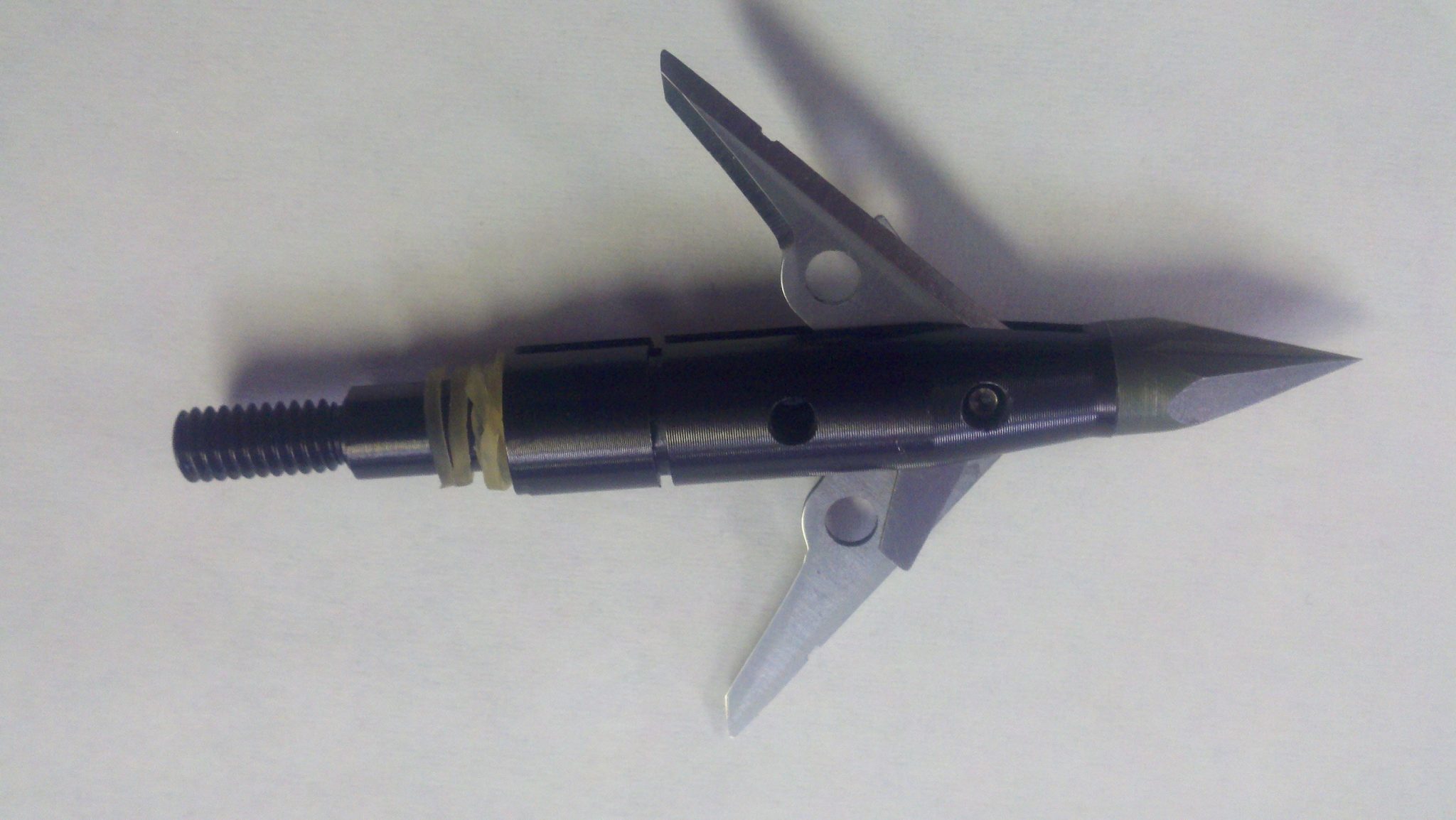
The greatest benefit to a rear-deployment mechanical is the huge entrance holes. Many over the top expandable heads are designed to open inside the hide producing smaller entry holes and a reduced blood-trail, hence the popularity of such heads at the RAGE and the G5 T3.
Now my first thought when I opened my new packs of the ULMER Edge was, ‘this looks like a SWHACKER.’ Both have blades tucked in the ferrule during flight and both use a similar mechanical lever to deploy the heads’ blades. However, the major difference is where the “levers” are located on the head. The Swhacker’s “levers” are placed at the rear of the broadhead, which means that the majority of the broadhead has already entered the animal before your blades begin to deploy. The Edge has taken those “levers” and moved them forwards so that we have full blade deployment before it enters our target trophy.
It was Rusty’s desire to improve on the benefits of the RAGE that led to the development of the Edge. The major design improvements:
-Lower in-flight profile
-Blade retention system that won’t result in open blades in flight or our quivers
Just about everyone on the market has tried a RAGE broadhead and it’s a 50/50 chance that you had blades open in your quiver or at some point before the arrow found its mark. My other issue was with the practice head. If you look at the practice heads and compare them to the broadhead itself the first thing that stands out to me is that the broadhead has more blade exposure than the practice head. Which means more surface area, more air disruption, and a slightly altered point of impact at longer ranges. Now to the Whitetail hunter shooting 20-30 yards it won’t be noticeable, but to the western bow hunter shooting 60+ yards when the situation requires that could be the difference between meat in the freezer and tag soup.
I haven’t had the opportunity to shoot these heads at any distance but that time is coming. I was, however, fortunate enough to get them just in time to head to Kansas for a mid-season turkey hunt the last week of April. Typically, what I look for in a body shot broadhead for turkeys is a 2” cutting diameter expandable 3 blade (example…Trophy Ridge HAMMERHEAD) so a 2 blade 1.5” cut seemed to be a little small for such a tough little bird. But what GREAT results! Shot both my birds on the second day at 11 yards.
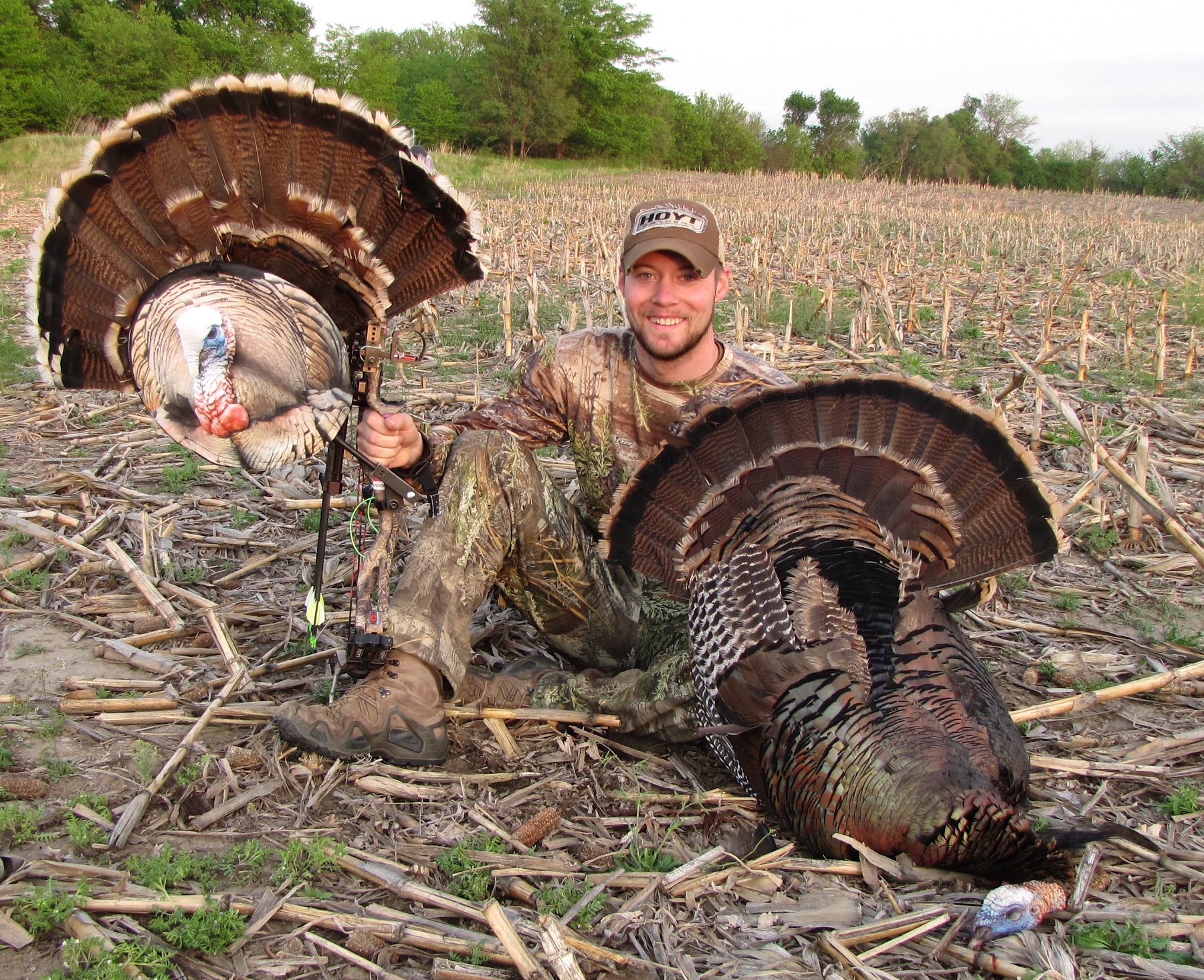
These heads will have a permanent place in my big game arsenal!














